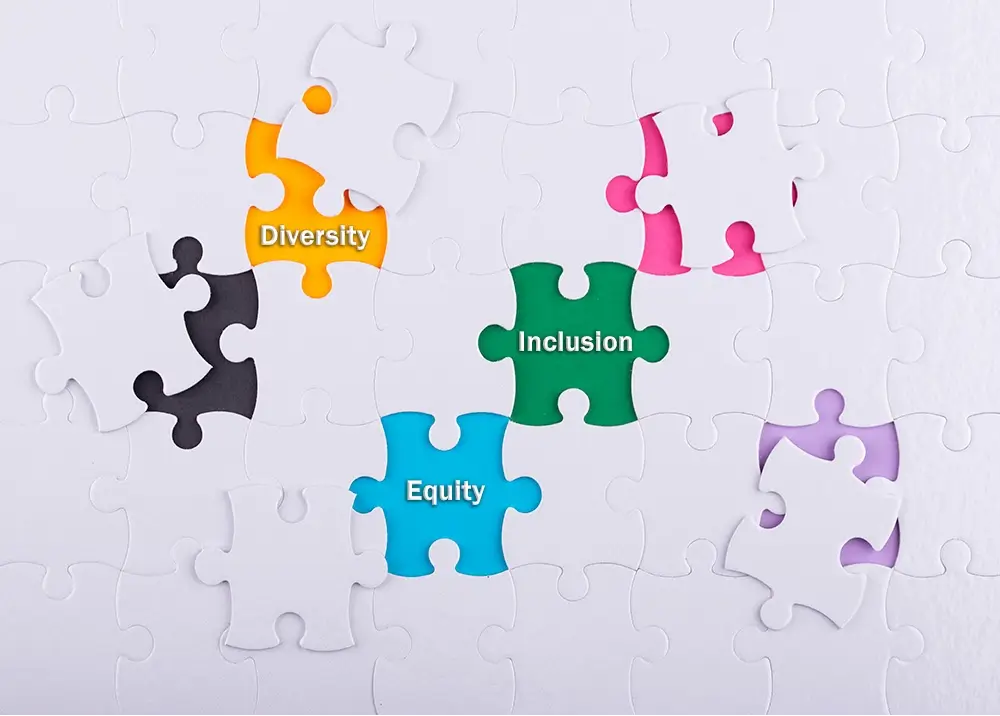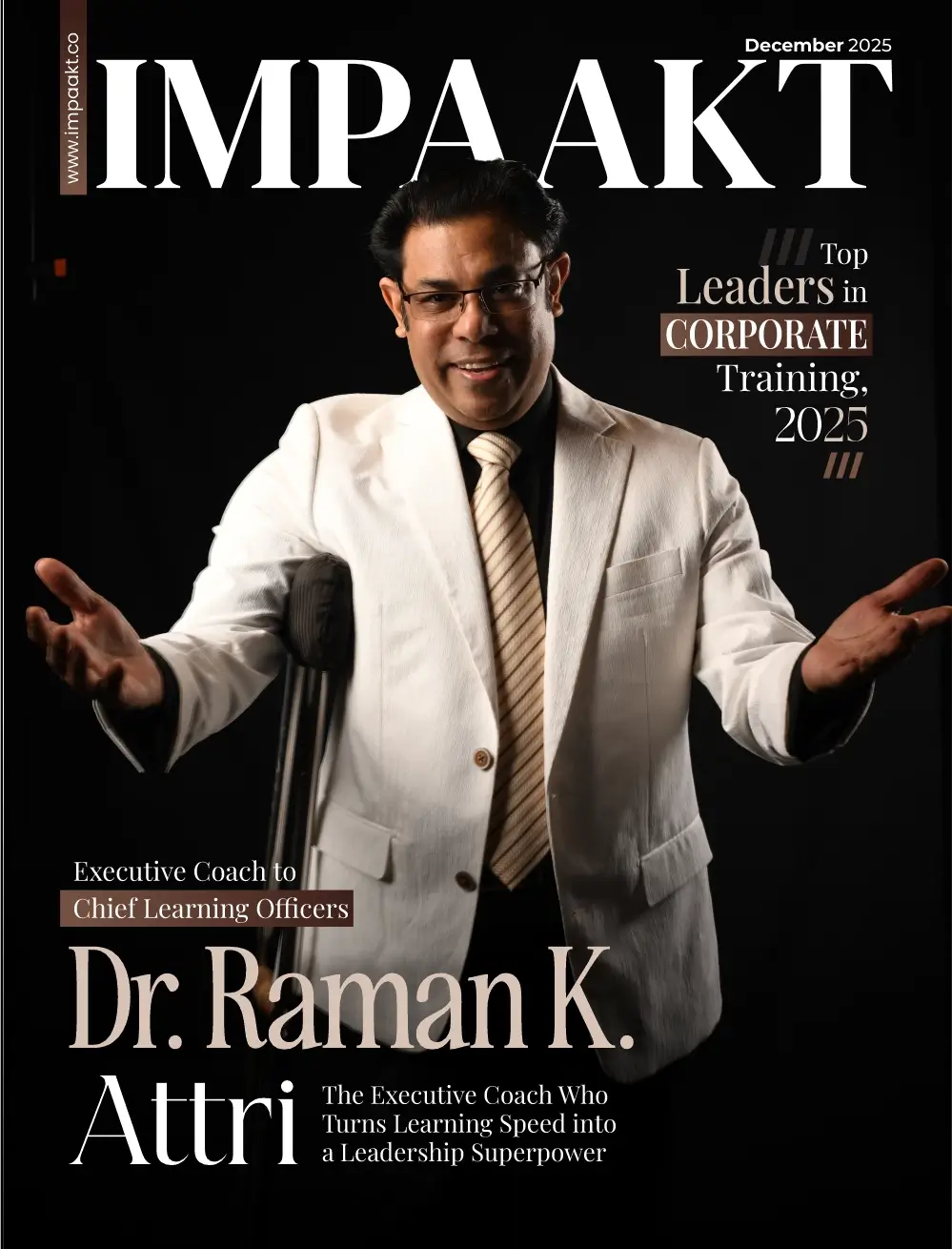Imagine for a moment that the journey to an inclusive workplace is like assembling an intricate puzzle.
Each piece, carefully crafted and unique, represents a vital strategy or element essential to constructing a harmonious and equitable workplace environment. With each piece we place, the picture becomes clearer, the potential more profound. Together, they reveal the final image: a workplace where diversity thrives, equity prevails, and inclusion is not just a buzzword, but a living and breathing reality.
Yet, as we embark on this quest, we cannot ignore the shadow that looms from history’s pages. Discriminative practices, rooted deep in societal norms, have cast a long, oppressive shadow over our collective past. From the harsh divisions of segregation to the unyielding grip of gender bias, the threads of discrimination have woven a complex tapestry that has held back entire segments of our society. And unfortunately, these biases have not remained confined to the realms of our neighborhoods and communities; they’ve also seeped insidiously into the heart of our businesses.
Here’s a hard truth that no one wants to hear but everyone is acutely aware of: historical prejudices continue to echo in the hallways of our workplaces, often disguised beneath the veneer of modernity. Despite our progress in so many ways, disparities persist. According to a recent report on, “The State of Workplace Discrimination” by NASDAQ, 55% of workers say they have experienced discrimination at their present company.
Be it unequal pay, unequal opportunities, or anything in between, these historical inequities have shaped our corporate cultures, influencing hiring practices, promotion decisions, and the very dynamics of how we work together. But, within this challenge, lies an incredible opportunity—the chance to dismantle the legacy of discrimination and to construct something better, transformative, and inclusive.
Top 10 Strategies to Foster DEI in the Workplace
Each strategy we unveil represents a piece of this grand puzzle, a strategy that contributes to the larger picture of a truly inclusive workplace.
So, let’s dive right in!
Leadership Commitment
Effective DEI initiatives begin with unwavering leadership commitment. When leaders champion diversity, equity, and inclusion, their actions set the tone for the entire organization.
Actions to Demonstrate Commitment:
- Public Commitment: Leaders should publicly and consistently express their commitment to the cause through statements, initiatives, and visible participation in the designed programs.
- Resource Allocation: Allocate adequate resources, budget, and personnel to DEI efforts, reflecting the organization’s dedication to this cause.
- Inclusive Decision-making: Incorporate diverse perspectives at leadership levels, ensuring decisions are made with a comprehensive understanding of employee needs and goals.
- Accountability: Establish measurable goals for leadership and hold them accountable for progress.
Inclusive Hiring Practices
To build a diverse workforce, organizations must actively seek out candidates from a broad range of backgrounds.
How to Attract a Diverse Talent Pool:
- Unbiased Job Descriptions: Review and revise job descriptions to ensure they are inclusive and avoid biased language, which can discourage underrepresented candidates.
- Diverse Sourcing: Actively recruit from diverse talent pool, including historically underrepresented groups, colleges, and organizations.
- Structured Interviews: Implement structured interview processes that focus on skills and competencies rather than subjective judgments.
- Diversity Metrics: Set and track diversity-related hiring metrics to measure progress over time.
Employee Education and Training
Education and training programs are essential for creating a workplace culture DEI-centric where employees understand the nuances of bias, privilege, and inclusion.
Steps for Promoting Awareness:
- Implicit Bias Training: Offer training to help employees recognize and address unconscious biases that may affect their decisions and interactions.
- Inclusive Language Workshops: Conduct workshops on using inclusive language, which can foster a more welcoming environment.
- Cultural Competency Training: Equip employees with the skills needed to navigate diverse workplace dynamics effectively.
- Regular Training Refreshers: Implement ongoing training to reinforce these concepts and ensure they remain top-of-mind.
Establishing Inclusive Policies
Outdated HR policies can inadvertently perpetuate discrimination. Regularly review and update policies to ensure they align with DEI goals.
Creating Inclusive Policies:
- Equal Pay Policies: Implement transparent pay policies to ensure equal compensation for equal work, addressing pay gaps.
- Flexible Work Arrangements: Offer flexible work options to accommodate diverse employee needs, such as remote work or hybrid arrangement.
- Diverse Recruitment and Promotion Guidelines: Develop and enforce guidelines that promote diversity in recruitment and advancement, such as diverse candidate slates.
- Anti-Discrimination Measures: Strengthen policies and procedures for reporting discrimination, harassment, and microaggressions, emphasizing a zero-tolerance approach.
Creating Affinity Groups
Affinity groups provide employees with shared backgrounds or experiences a platform to connect, advocate for change, and build a sense of belonging.
Supporting Employee-Led Groups:
- Formalize Affinity Groups: Encourage the formation of employee-led affinity groups, including those focused on race, gender, LGBTQIA+ issues, and more.
- Resource Allocation: Allocate resources, meeting spaces, and funding to support affinity groups’ activities and initiatives.
- Leadership Support: Encourage leadership participation in affinity groups, fostering cross-functional collaboration and mutual understanding.
- Allies and Advocates: Promote allyship programs to engage employees who may not identify with a particular affinity group but wish to support them.
Regular Diversity Audits
Regular diversity audits allow organizations to track DEI efforts, identify areas for improvement, and make data-driven decisions.
Conducting Diversity Audits:
- Data Collection: Gather demographic data related to employees, including race, gender, age, and tenure.
- Analyze Employee Surveys: Conduct anonymous employee surveys to gauge sentiments related to DEI and inclusion.
- Pay Equity Audits: Periodically review compensation data to identify and address wage disparities.
- Identify Bias in Promotion: Assess promotion and advancement statistics to identify potential biases in leadership development.
Mentorship and Sponsorship Programs
Mentorship and sponsorship programs provide crucial support for employees from underrepresented backgrounds, helping them advance in their careers.
Supporting Career Development:
- Mentorship Pairing: Match experienced mentors with mentees from underrepresented groups, facilitating skill development and career guidance.
- Sponsorship Opportunities: Encourage leaders to sponsor high-potential employees, advocating for their advancement and career opportunities.
- Structured Programs: Develop formal mentorship and sponsorship programs with clear goals and expectations for participants.
- Feedback and Evaluation: Continuously evaluate program effectiveness, adjusting to maximize impact.
Workplace Flexibility
Flexible work arrangements can accommodate diverse needs, promote work-life balance, and enhance employee well-being.
Implementing Flexibility:
- Remote Work Policies: Develop clear remote work policies that outline expectations, performance standards, and communication guidelines.
- Flexible Time Schedules: Offer flexible work hours, allowing employees to adapt their schedules to personal needs.
- Job Sharing: Explore job-sharing arrangements where two employees share responsibilities for one role.
- Parental Leave Policies: Ensure inclusive parental leave policies that support all types of families and caregiving situations.
Employee Feedback and Inclusion Surveys
Regularly seeking feedback from employees helps organizations identify areas where inclusivity can be enhanced.
Using Surveys to Gauge Employee Sentiment:
- Anonymous Surveys: Conduct anonymous surveys to collect candid feedback on DEI initiatives and workplace inclusivity.
- Focus Groups: Organize focus groups to facilitate in-depth discussions and gather qualitative insights.
- Action Plans: Use survey results to create concrete action plans for addressing specific issues and improving DEI efforts.
- Transparency and Follow-up: Communicate survey results and the steps being taken in response, demonstrating a commitment to change.
Celebrating Diversity and Inclusion
Acknowledging and celebrating diversity fosters a sense of belonging and inclusion, reinforcing the value of everyone’s unique contributions.
Organizing Diversity-Focused Initiatives:
- Cultural Celebrations: Recognize cultural heritage months, holidays, and traditions by organizing events and activities.
- Inclusive Recognition: Ensure that recognition and awards programs are inclusive and consider contributions from all employees.
- Diversity Forums: Host open forums and discussions where employees can share their experiences and perspectives.
- Employee Spotlights: Feature diverse employee stories and experiences to highlight the organization’s commitment to inclusivity.
Finishing the Puzzle
Before we finish off the puzzle, do check the best practices for Diversity and inclusion. As we draw near to our conclusion, it’s essential to remember that building inclusivity is a gradual process. Rome wasn’t built in a day, and a genuinely inclusive workplace won’t manifest itself overnight either. It’s a continuous journey filled with both setbacks and valuable lessons.
So, let’s commit to the cause, and not only reshape our present but also chart a course toward a future where diversity is celebrated, equity is practiced, and inclusion is the norm.

 Trishika Rokade, Writer and Content Strategist
Trishika Rokade, Writer and Content Strategist










